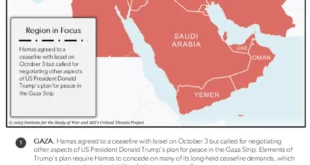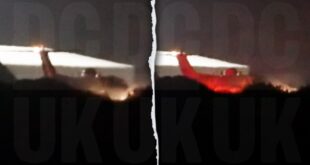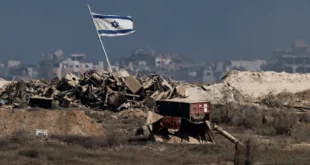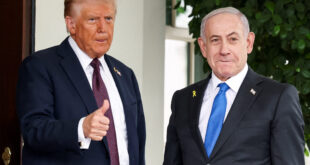BAGHDAD (Reuters) – A dramatic fall in violence has breathed life into Baghdad’s once moribund property market, although the hunt for homes in Sunni and Shi’ite enclaves bodes ill for sectarian reconciliation in the Iraqi capital.
Real estate prices have doubled in some parts of Baghdad in recent months and many properties sell or are leased as soon as they hit the market, say the city’s realtors, who as recently as last year were jobless as sectarian killings raged in the city.
“Last year there was lots of real estate to sell and no buyers. Now it’s the opposite. There’s not enough for sale. If you put something up for sale, it’s immediately sold,” said Abdullah Jasim of the al-Noor real estate agency.
The government has urged millions of Iraqis to return home, sometimes even sponsoring flights to bring them back, following a drop in violence to four-year lows in recent months.
But the motives behind many real estate deals cast a shadow over efforts to reconcile Shi’ites and Sunni Arabs, whose desire to live in exclusive sectarian enclaves is a major driver behind the resurgent property market, realtors say.
“Districts are now reserved for each sect … everyone knows that if you go to this area, you’re this sect, and if you go to that area, you’re that sect,” said realtor Mahmoud al-Mokhtar.
There are 2.8 million people displaced in Iraq. Most are from Baghdad, and fled a wave of violence that followed the bombing of a revered Shi’ite shrine in 2006.
At the height of the chaos, sectarian death squads killed dozens of people each day, dumping their bodies in the streets.
Now, for example, Shi’ites who fled the Baghdad district of Karkh want to live with their co-religionists in Rusafa, one realtor said. Given that Rusafa is roughly half the size of Karkh, property prices there have risen with demand.
But even in Karkh, site of once-notorious al Qaeda hotspot Haifa Street, prices have doubled in the last six months, said real estate investor Monawar al-Zubaidi.
A “deluxe” three-bedroom 150 square meter apartment there now costs $130,000, he said.
Alongside the sectarian impetus, the few mixed districts where sectarian violence was minimal command some of the highest prices.
“I’m looking for a mixed area that is not considered Sunni or Shi’ite … where people are educated and do not think of sect and violence,” said 22-year-old legal student Omar al-Dulaimi, who has returned to Iraq after living in Syria.
“I’m shocked at how high the prices are, but I’m willing to pay more for security,” he added.
Iraqis returning from self-imposed exile abroad make up about 20 percent of demand for Baghdad homes, Zubaidi said. But Mokhtar added the sharp jump in prices has surprised them.
“The Iraqis coming from abroad are no good. When I show them some houses, they don’t believe the costs and ask me how I can expect them to pay such prices. They tell me ‘I could get a villa in Tunisia for that’,” Mokhtar said.
GOOD INVESTMENT?
The security improvements in Baghdad are dramatic, so investing in property in the city could be a good long-term bet.
At the end of the working week, thousands of families flock to Abu Nawas street, a tree-lined avenue on the banks of the Tigris River with a newly renovated park to relax. In July, the foundation stone was set for new luxury hotel in Baghdad.
At the moment, however, realtors say betting that the Sunni and Shi’ite Arabs who once lived together will not do so again is proving a sound investment strategy.
“There are Sunnis buying all Shi’ite homes in Sunni areas and vice versa, as an investment, knowing Sunnis want to live with Sunnis and Shi’ites with Shi’ites,” Zubaidi said.
Some families have tried to return to their original homes, only to find them occupied by squatters. Last week, the government launched a campaign to evict the squatters, and released figures for the number of families they had helped return home.
Not everyone is benefiting. Continued instability in Sunni-dominated Hay al-Jami’a, formerly one of Baghdad’s wealthiest districts, continues to depress prices.
“Last week, a Shi’ite family returned to Hay al-Jami’a. They received a note telling them they had 72 hours to leave. The army can’t really control it,” said Mokhtar, referring to a once-common practice by militants of forcing families from a different sect out of a neighborhood.
In Kadhamiya, a mostly crowded, low-to-middle class and predominantly Shi’ite district of north Baghdad, prices have rocketed.
Its small houses and narrow lanes contrast sharply with the wide streets and genteel houses of Hay al-Jami’a, traditionally the quiet preserve of professionals and diplomats.
Its trump card, however, is the shrine of Imam al-Kadham, one of Shi’ite Islam’s 12 imams. The shrine attracts tens of thousands of Shi’ite pilgrims every year.
Shi’ite ceremonies were curbed under former Iraqi leader Saddam Hussein, but now religious tourism has taken off, and the rise in Kadhamiya property prices mirrors that in the southern Shi’ite holy cities of Najaf and Kerbala, realtors say.
 Eurasia Press & News
Eurasia Press & News



